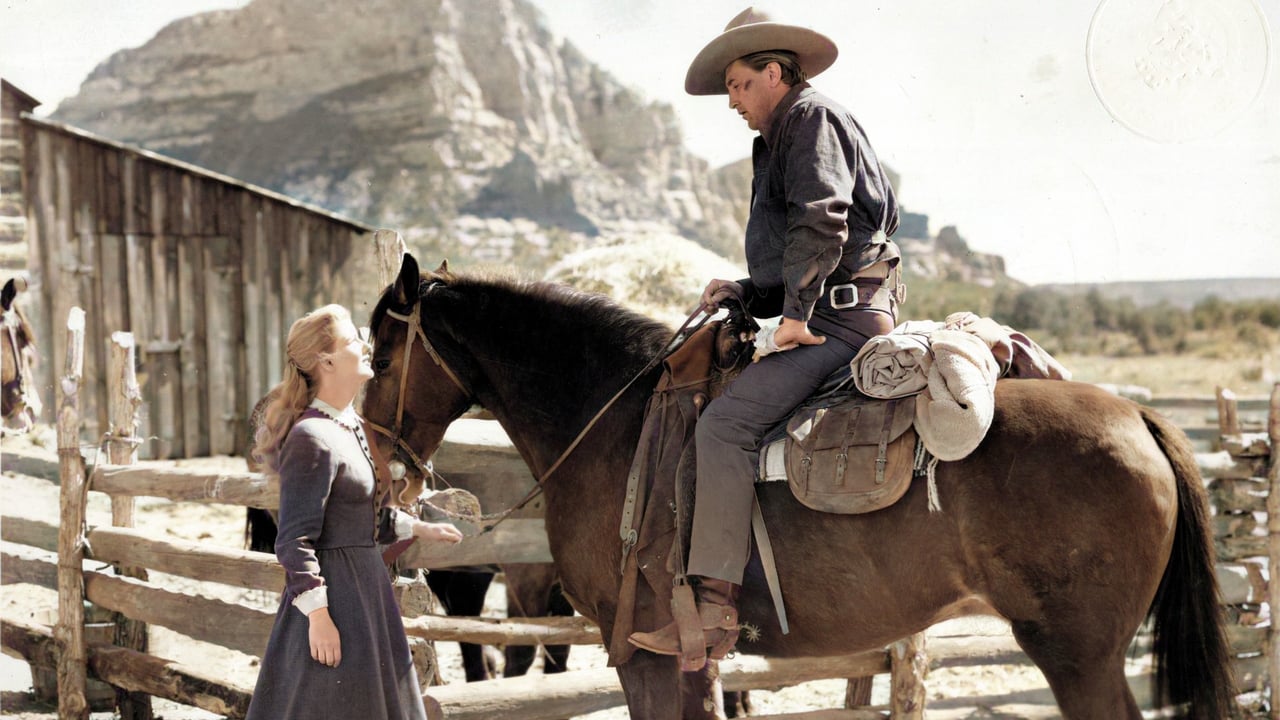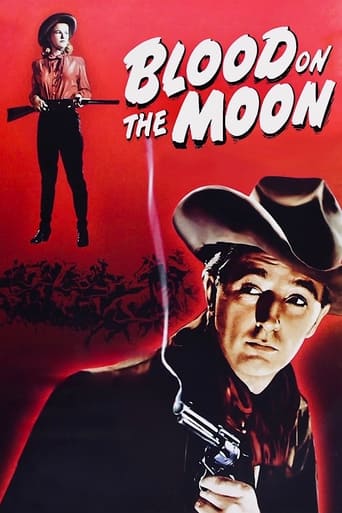

Wow! Such a good movie.
... View MoreSurprisingly incoherent and boring
... View MoreThe performances transcend the film's tropes, grounding it in characters that feel more complete than this subgenre often produces.
... View MoreVery good movie overall, highly recommended. Most of the negative reviews don't have any merit and are all pollitically based. Give this movie a chance at least, and it might give you a different perspective.
... View MoreOne of the better westerns from RKO Radio Pictures. Credit director Robert Wise for this sagebrush classic starring Robert Mitchum as a lonely drifter named Jim Garry, who gets involved with a fast talking friend, Tate Riling (Robert Preston), as a conflict between cattleman and homesteaders is warming up. Of course, Riling always has a way of getting in the middle of shady schemes involving underhanded money. Garry meets a cattle owner John Lufton (Tom Tully), who's attitude grows hostile after suspecting that his new friend is in cahoots with Riling trying to get his herd for cheap. This black and white western is based on a novel by Luke Short and is filmed in the scenic area of Sedona, Arizona at Red Rock Crossing. BLOOD on the MOON will bring back memories of Saturday afternoons at the movies.A star filled cast is rounded out with: Barbara Bel Geddes, Frank Faylen, Walter Brennan, Phyliss Thaxter, Harry Carey, Jr., Charles McGraw and Iron Eyes Cody.
... View More'Blood on the Moon' (1948) mini-review - It still surprises me that after all these decades I'm still finding great old movies I've never seen before. Today on TCM there was an excellent western on called 'Blood on the Moon'. Somehow I'd never seen it. I will now add this to my list of favorite all time westerns. Robert Mitchum was in top tough guy form here. Walter Brennan was excellent as always. Mr. Brennan especially impressed me in one scene where he gets some terrible news. He expresses so much in that moment with just his face and no words. Barbara Bel Geddes was also impressive as a tough woman who stands up as a match for Mitchum. The direction by Robert Wise and Lillie Hayward's screenplay were top notch too. If I had one compliant it's that Robert Michum's character sure recovers fast from a serious injury...oh it's just a knife wound to the chest put a few herbs on it and I'll be good as new in an hour or two. Still if you love westerns I highly recommend this one.
... View MoreThis Western was directed by Robert Wise and has a fine, experienced cast. The story is a familiar one. One old chum (Preston) sends for another old chum (Mitchum) to offer him a job. The problem is that, though a juxtaposition of circumstance, it's a lousy job, even though it would pay well. Mitchum is supposed to help Preston and his gang of low lifes scam the local farmers, like Walter Brennan, and an honest rancher, Tom Tully, out of his cattle. The means are too complicated to bother explaining.It must be one of the least glamorous Westerns ever filmed. The opening shots are of Mitchum alone on horseback, riding over some dark hills in the middle of a torrent. He's drenched and uncomfortable. Few people in the story look comfortable. It's cold and turns snowy. The men are bundled up in winter clothing and wear tall ugly cowboy hats. They tend to wear chaps, which are really fit only for stylization, like Robert Duval's woolly chaps in the original "True Grit." In a minor role, Charles McGraw lumbers around in what looks like a bear costume, growling his observations.The women look delicate though. Barbara Bel Geddes is attractive and ends her lines with the terminal contours of an upper-class school girl from Rosemary Hall. Phyllis Thaxter, I think, is miscast as Preston's naive girl friend. She's purity personified and it's hard to swallow her attraction to a lying, mustachioed villain like Preston. Lust is not exactly her forte.Many of the scenes take place at night and everything looks depressing. It captures the atmosphere all right but the atmosphere is something from Dante's Purgatorio.In the course of the tale, Mitchum changes his mind, sides with the good guys, has a brutal fist fight with Preston, finally has a shoot out with the villains, and ascends Mount Purgatory to the peaceful summit, hand in hand with Bel Geddes.There's a lot of energy on screen but little of it looks original. Mitchum is a bit plump and sleepier than in some of his other work. But it must be said that after that unsparing, barbaric fight in the bar room, Mitchum and the make up department, allowed him to look like hell, his long hair hanging in strands over his ears, sweating and panting as the usual heroes never do. There are also some impressive shots of a pursuit through the snow. All of it might have been better done in color.
... View MoreDon't let the whims of men fool yaThrough the opening credits Jim Garry (Robert Mitchum) arrives; a plains drifting stranger who we are immediately as unsure of as the other characters - this uncertainly of intent remains for the majority of the picture. Garry, hired by friend Riling, is invited to cheat the Lufton ranch of their cattle by forcing them to remain on government land, pressuring the Lufton's to sell cheap or lose everything. When the plot turns deadly Garry is forced to confront his friend's real intentions.Garry's independence is the focus of Blood on the Moon's reputation as a noir-ish western: Mitchum's character is not a traditional black or white, good or bad guy. He is a recognisable isolated cowboy freelancer, a hired gun willing to double-cross if it serves him well. But he is not amoral. Mitchum's laconic, too cool for you, persona is at full strength. In a couple of scenes he almost completely drifts into himself. Garry's motivation and alliance is ambiguous throughout, but is eventually tied up a little too neatly which detracts from the overall atmosphere, "you always had a conscious breathing down your neck".Aside from Mitchum's Jim Garry (and writer Luke Short), the 'noir' in Blood on the Moon comes courtesy of director Robert Wise and cinematographer Nicholas Musuraca (fresh from Out of the Past the previous year). Night shots with moon light tearing through the tree leaves, and in particular the barroom high-key lighting during an important fight scene are very reminiscent of film noir and serve this film very well.A dirty 'psychological western' where heroism and sacrifice are replaced by mistrust and revenge. The ending is fairly abrupt, disappointing the ambiguity wasn't carried through until the close. One review from 1949 makes reference to the original Saturday Evening Post serial, on which the story is derived, and the relative 'ordinariness' of the Hollywood- adapted film.Odeon Entertainment (UK) have released a good quality DVD edition, taken from a good US source. The picture does suffer from format conversion (some softness), certainly not enough to detract from the film. The only real damage is a mighty tear which only last a couple of seconds.Well, I'll drift...
... View More